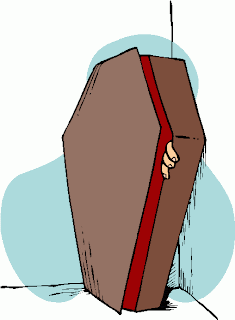How Kids See the World
Today as part of a inquiry-based math lesson we were using straws and twist ties to make quadrangles. The goal was to explore, compare and contrast a variety of quadrangles. One of those quadrangles was a kite.




It wasn't a kite to everyone though. To one of my boys, it was a coffin. To a certain extent, you have to admire his creativity. More so though, I felt saddened by his premature morbid view of the world. He's seen way more than any eight-year-old should have to, and sometimes I forget until moments like this.

Comments
Some of the children were confused and thought a tunnel was a grave because they were both in the ground. So we had a nice little brief discussion about death and funerals in my pre-k class. It really does make you wonder what children have been exposed to in their lives.
1. Far more common word; they are more likely to encounter it.
2. Refers to sides rather than angles. For most kids (and many adults) 4 sides is easily understood, 4 angles not so easily.
3. For your Spanish speakers, the lateral/lado relationship is worth seeing (and probably reinforces a string of cognates and near cognates)
I use quadrangle only as the unshortened form of "quad" in reference to a large open courtyard, as on a college campus.
Jonathan jd2718
You make a good point. The EDM curriculum uses quadrangle so I try to be consistent with what they'll see on their assessment, but I think it's important their familiar with other names for these shapes too.
You want the book to make sense? Teach "quadrilateral," and emphasize four sides. Do the linguistic bit: quatro lados.
Later (preferably weeks) return, and ask about angles - show that four sides goes with four angles, and add that there is a special word (even though we won't often use it). You can play "guess the word" (remind them of the parts of the word "quadrilateral") or you can give the word, and get them to explain the parts.
In any case, there is a nice short discussion between the number of sides and angles, that should not be skipped.
-----------------------------------
Back to the start: I would treat quadrangle as unusual, and for elementary school purposes, as pedagogically inappropriate. Define it so they are not confused by the book, but you are better off sticking to the vocabulary the rest of the world (and even New York State) uses.
Jonathan jd2718
www.p12.nysed.gov/ciai/mst/math/glossary/4mathlang.doc
www.p12.nysed.gov/ciai/mst/math/glossary/5mathlang.doc
In the lower grades we actually use EDM for our unit assessments as well, but I think you're right to emphasize the more common usage. In the meantime, I've noticed my kids have been getting a firm idea of the connection between a polygon's name and the number of angles. There's a lot of cases where EDM language doesn't always match with broader vocab though (e.g. number model v. number sentence v. expression), so it's always important to cover those words.
(If math's not your thing, you really should have access to a staff developer or some training, or find a place to ask questions.)
You can think of the two as "sentence" and "phrase." A number sentence has a "verb" (equals, less than, less than or equal to, etc) and an expression does not.
7 - 3 is an expression. 7 - 3 = 4 is an equation. An expression can be "evaluated", that is, we can find the value of an expression. An equation can be true, or false.
When variables are introduced (prematurely in New York State) equations are "solved" and expressions are evaluated or simplified.
Jonathan jd2718